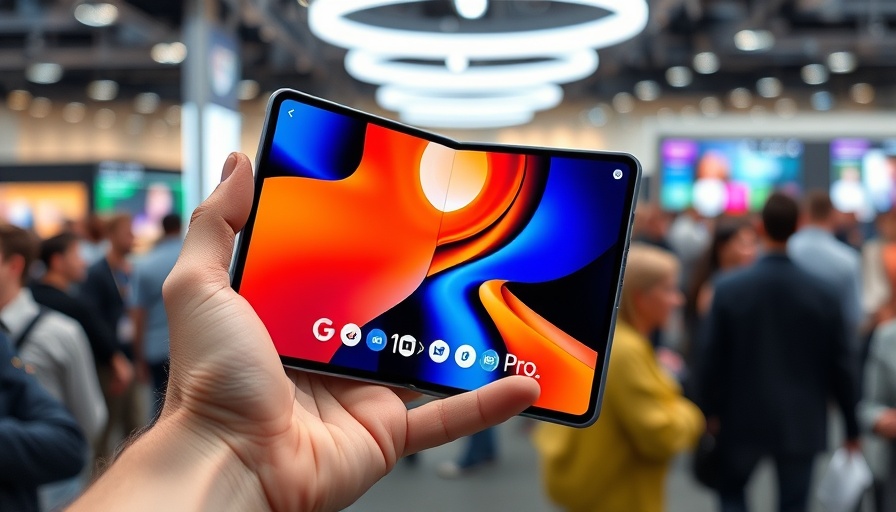
Google's New Foldable Phone: What to Expect
In the world of consumer technology, foldable devices are becoming increasingly popular, with many major brands diving headfirst into this burgeoning market. Google, known for its innovation, is set to follow suit with its upcoming release, the Pixel 10 Pro Fold, anticipated to hit stores in September 2025. Reports suggest that this new handset may closely resemble its predecessor, the Pixel 9 Pro Fold, but subtle evolutions in design and functionality could set it apart.
A Design That's Familiar Yet Fresh
According to recent leaks from Android Headlines, the Pixel 10 Pro Fold aims to maintain a similar aesthetic to the Pixel 9 Pro Fold, which is praised for its stunning design. Although initial reports indicated a potential slimmer profile, updated insights suggest that it might actually be slightly thicker or maintain the same thickness as before—approximately 5.1mm when unfolded. This slight change may reflect adjustments in the internal components rather than a failure to innovate.
New Features and Competitive Pricing
While the external look of the Pixel 10 Pro Fold may not drastically change, internal upgrades are on the horizon. Rumors hint at a new Tensor G5 processor and possibly improved camera sensors that could enhance the photography experience that the Pixel series is famous for. Additionally, another exciting aspect of this release is its predicted lower price point. Google's strategy seems to contrast sharply with other smartphone manufacturers, who are either raising their prices or keeping them stable in a competitive landscape.
Implications for Smartphone Enthusiasts
This development is significant for consumers who are eagerly waiting for more affordable options in the high-end smartphone market. As technology companies continue to edge toward foldable designs, the Pixel 10 Pro Fold may not only cater to current Pixel users but also attract new customers looking for innovation combined with value.
 Add Row
Add Row  Add
Add 




Write A Comment